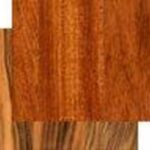Even people who may have already refinished a wooden floor in an entire room can balk at the idea of refinishing wooden stair treads. It can seem like a pain or nuisance – but it really doesn’t have to be dreaded. You do need to remember, however, that stair treads need to be treated a bit differently than floors. They may need a different stain or paint treatment than that used on a comparatively flat surface, especially if you are refinishing steep or winding stairways. With that in mind, you’ll be able to make the right choice of finish as you work on your stair treads.
Refinishing wood stairs – gather your supplies
As with most jobs, proper preparation is essential for excellent results. Because you will eventually be working with stain or paint (after you’ve gotten through the sanding and other steps), you’ll want to make sure you have figured out how to keep the stair area well-ventilated. Also, if you are working on a hot or humid day, be aware of the fact that you may have to leave more time for any stains or finishes to dry.
Before you even start to refinish wood stairs, however, you’ll want to have drop cloths or old rags, a good sander and edger (rented or bought), proper brushes, paper towels, mineral spirits or paint thinner or cleaner, a good container, sticks to stir your paint or stain, sandpaper and safety goggles. I also use rubber gloves because it is very easy to get a wooden splinter in your hands or get stain all over them. I hope you also make sure you are wearing old clothing because when you refinish stairways, you can easily get permanent stains on your clothes.
A good shop vacuum cleaner is very important. You might be able to use a standard vacuum but an industrial strength one is desirable. Expect plenty of dust and if you want to minimize cleaning later, consider covering any furniture in nearby rooms with old blankets, sheets or drop cloths. You can even tape off those areas with plastic film, also helpful in keeping dust under control.
Important tip: get the right sander and edger for stair treads. If you decide to rent one, be sure and ask about the perfect sander and edger for small spaces. I happen to like Porter Cable sanders, some of which are available at Amazon or some hardware stores. The 363 model is nice on wood stairways. However, you can find out what is most popular by talking to local hardware store or rental store employees. They’ve always given us good advice. You can get by with a large floor sander but it can be a pain and takes some tricky maneuvering to do this right. I’d recommend smaller sanders.
Depending on the wood stair treads, prepare the surface properly
Since you are going to refinish the wood, odds are that you aren’t working with unfinished wood. You’re either working with wood that has been sealed in some way or has old and worn stain or paint on it. Most likely, you’ll want to sand the wood right down to its original bare state, leaving it porous and ready for stain or paint. This can be tricky when working with wood stair treads. Not only are you sanding a much smaller area than a floor but you are working on an incline.
As long as you have the proper size sanders, however, you should be fine. You can gain confidence by practicing on a spare piece of wood first. Don’t worry unduly about minor scratches or cracks because you can fill these later with a wood filler, if necessary. Try to sand each step at least three times, using a different grit of sandpaper for each part of the process. Of course, you’ll want to complete the entire stairway with one type of sandpaper before moving on to the next type of sandpaper.
Important tip: when refinishing stairs, start sanding with a medium grit of sandpaper and work your way down to a fine grit sandpaper. If you work slowly and carefully and sand along the grain of your wooden stair treads, you should be fine. This really isn’t difficult but it does take patience. Also, since you’ll be creating a smooth surface, be sure to avoid falling. You’re working on a stairway – after all – so do use some caution and don’t slip on the newly smooth surface. Also, as you work, go from the higher stair areas and move downwards, just as you would if you were cleaning a room.
Once sanding is completed, remove all dust from the stair treads
While it takes time, going over the surface of each step with many tack cloths as well as a lightly moistened cloth will keep dust from ruining your stain or finish. Double check each step to make sure you haven’t left behind any old stain. Also, take an old rag or pull a sock over your hand and run it along each wood tread. Feel any rough spots? Now is the time to make sure those are sanded out.
Important tip: If your home is older, your stair treads could be very uneven or possibly bowed a bit. Eye them carefully and see if you notice any glaring issues. If so, you may need to call in a professional carpenter to even up your floor before you stain it. This shouldn’t be too costly but don’t avoid this step. This is the time to address it.
Consider using a wood conditioner to make sure your stairway absorbs any stains evenly
Your treads could be made of either soft woods or harder ones. While it might seem strange to think of some wood as “soft”, the fact is that relatively soft pine stairways will react differently to stain than other types of wooden stairs generally lumped into the hardwood category. A wood conditioner such as Minwax Pre-Stain Wood Conditioner or a similar product can give excellent results.
Important tip: A wood conditioner is not always necessary. Sometimes you can refinish wood treads by simply sanding and and adding new stain to them. But make sure about this before you omit a wood conditioner. Pre-stain wood conditioners can keep grain from raising on your stairway and also ensure even stain penetration.
Apply a new finish to your wooden stair treads
If you like the color of the bare wood, you can simply seal and finish them with polyurethane or other type of finish. However, we like Minwax or similar wood finishes for adding color and a distinctive accent to our stairs. You should test your color in a relatively unseen area of the stair treads before completing your project. Remember that any polyurethane you add to the stairs can change the color of your stain so keep that in mind and perhaps test out your combination on an extra piece of wood first.
Important tip: If you decide to go with a stain and polyurethane combination, often sold as one product, remember that stairs can be slippery if the finish is too glossy or smooth. Talk to someone at your hardware store or lumberyard about types of stain that are safe, especially if you have a steep stairway, young children or elderly people in the home. There are stains and finishes out there to suit nearly anyone. Pick the right one for you and your family.
Just as you did when you sanded the floor, apply the stain in the direction of the grain. Remove any drips with rags (lightly). Although you may be able to get by with one coat, we generally use two or more coats of stain, letting it dry completely between coats. Be sure you have proper ventilation while working with stain on wood stair treads!
If desired, add a polyurethane topcoat
This is when you want to consider the style of your home as well as the occupants. Any glossy finish may increase the slipperiness of your stairway and also contrast with the entrance way or other areas near the stairs. You’ll want to have a coordinating or complementary look. You can use high gloss or low gloss polyurethanes and the choice for your stairs is simply what suits your taste and your home’s style. Stir carefully and apply with a proper applicator. Allow at least a full day or two to dry before walking on your stairs. Enjoy your newly finished wood stair treads!



